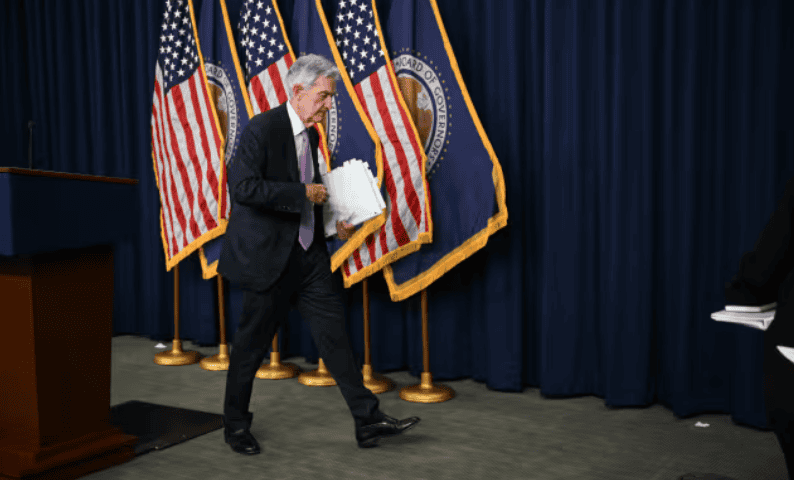Minutes indicate a gradual pace of easing ahead, economists say
The Federal Reserve surprised economists with a 50-basis-point cut to its benchmark interest rate in mid-September, a move that was seen as a “jump start” to an easing cycle,
However, minutes of the Fed’s Sept. 17-18 deliberations, published Wednesday afternoon, reveal a much more cautious central bank, economists said.
“The Fed is in little hurry to slash rates, for now,” said Oliver Allen, senior U.S. economist at Pantheon Macroeconomics.
Allen is one economist who thinks the Fed isn’t aware of how much trouble the economy is in.
He thinks the central bank will be acting with far more urgency to avert a significant slowdown around the end of the year.
Ryan Sweet, chief U.S. economist at Oxford Economics, said the minutes raise the risks that there could be fewer rate cuts in 2025 than he had expected.
Oxford has penciled in four quarter-point cuts next year, after a pair of 25-basis-point cuts in the last two meetings of 2024.
In 2025, “the Fed could pause longer to assess the impact of front-loading rate cuts in this normalization cycle,” Sweet said, in a note.
Minutes of the Fed’s meeting show that a “substantial majority” of Fed officials supported the decision to lower the benchmark rate by 50 basis points, to a range of 4.75%-5%.
Ahead of the Fed’s meeting, markets were unusually uncertain about whether the Fed would cut rates by 50 basis points or 25 basis points.
“For years, the Fed has clearly and transparently telegraphed their actions in speeches,” said Christian Hoffman, head of fixed income at Thornburg Investment Management.
The minutes show that there was a split at the meeting.
While a “substantial majority” of Fed officials supported the move to cut by 50 basis points. some officials preferred a 25-basis-point cut, and a few other participants agreed with them.
The minutes also show that some officials had wanted to cut rates in July, and that played a factor in their support for the 50-basis-point move.
Fed officials stressed that the 50-basis-point cut was not a signal that the pace of policy easing would be more rapid that the Fed’s own forecasts. Officials said it was also not a reaction to a deteriorating economic outlook.
Some Fed officials said it was appropriate to reduce rates gradually, given all the uncertainty surrounding the outlook.
The surprisingly strong September employment report, released late last week, convinced the markets that the Fed will be more gradual in its cuts. The economy added 254,000 jobs in September, well more than economists were forecasting.
“We anticipate that the Fed continues to lower the fed funds rate in coming months, albeit with more modest 25-basis-point cuts,” said Kathy Bostjancic, chief economist at Nationwide.
Fed officials seems split about the road ahead. Some warned against moving too late or too little, which they argued might hurt the labor market, while others warned against moving too soon or too much, which might reignite inflation.
“It’s a tough call how much more easing we get this year,” said David Rogal, lead portfolio manager of the BlackRock Total Return Fund.
“The range of views expressed in the minutes add to this uncertainty,” he said.
Two more quarter-point cuts is his base case, but it’s also possible the Fed decides to skip cuts in November or December, Rogal added.
Fed Gov. Michelle Bowman was the lone dissenter at the meeting, in favor of a 25-basis-point cut. She was the first Fed governor to dissent since 2005.

